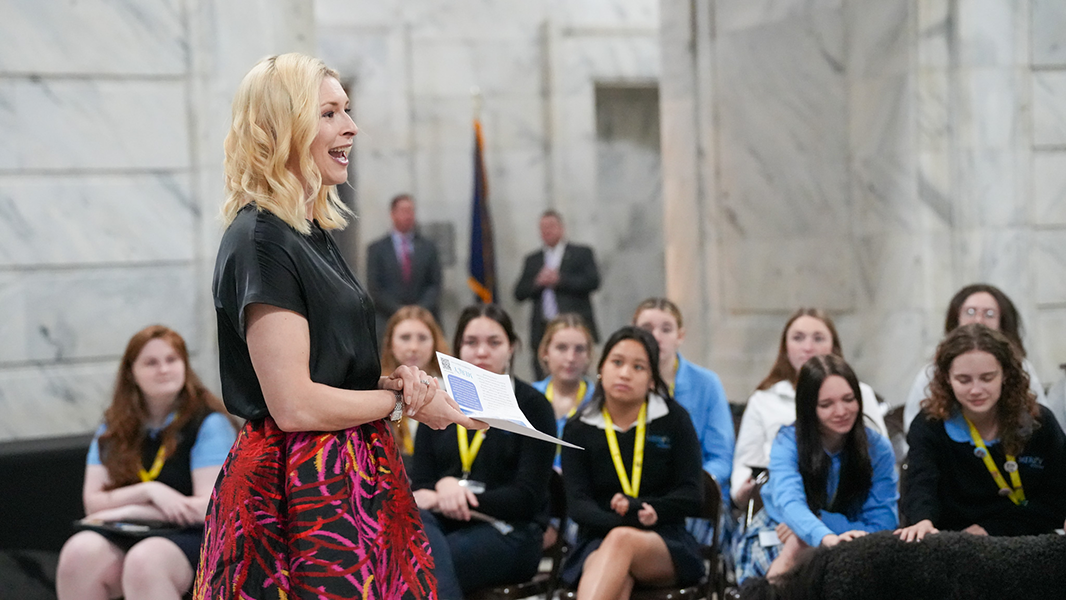Recent research shows that the intelligence level of girls may be higher than that of boys.
In August of 2011, fashion retailer Forever 21 began to sell women’s shirts with the slogan “Allergic to Algebra” emblazoned across the chest; however, no such shirts were sold in the men’s department.
These shirts have perpetuated the stereotype that girls underperform in educational subjects, especially those of math and science. But is this stereotype true?
Research says the opposite. University of New Brunswick, located in St. John, New Brunswick, released a study in which over one million girls and boys from over 30 different nations had their academic performances tracked. Across the board, the findings were clear: girls all over the world are outperforming their male classmates, even in STEM (science, technology, engineering and math) subjects.
Higher education is affected as well. According the to the Pew Research Center, 71 percent of females went on to pursue university level schooling, while only 61 percent of males did the same.
Research links success in the classroom to “self-regulation characteristics.” These characteristics include waiting for a turn to speak, raising hands, listening to instructions and attentively listening.
More often than not, girls would exhibit exceptional self-regulation characteristics, while boys were a full year behind the girls in developing these characteristics at the kindergarten age. With these traits put into use at the kindergarten age and up, girls were more likely to be seen as meticulous note-takers and efficient students while they continued with educational studies. Boys, however, seemed to have a more playful and relaxed attitude in the classroom.
These attitudes of students have been noted for many years. Director of Counseling Margaret Morse said, “[In the television show The Little House on the Prairie,] I remember episodes of the girls being dutiful and following directions, and the boys getting in trouble. I think this has been a centuries-long difference.”
On the educational front, Upper School math teacher Howard Hand, who taught at the St. Mark’s School of Texas for 13 years, noted key differences in the classroom between both boys and girls.
“I think a lot of guys tune out for one reason or another. And I don’t see the girls tuning out. They all seem to be engaged, trying to learn. And I think these are gender differences, not differences in the school, but there are lots of boys trying to learn everything they can,” Hand said.
Junior Demre Inanoglu, who previously attended Plano, Texas’ Shepton High School, a coeducational school, attests to this idea: “Boys definitely liked to play, goof and mess around more, whereas girls were [more focused on school],” Inanoglu said.
However, this doesn’t necessarily mean that one gender is more intelligent than the other. Junior Vivian Zhou, who has also attended a coed school in the past, said, “I don’t think that either gender is smarter. It’s just the way we approach school work, and I think that a lot of times girls are more of perfectionists and they are more detail-oriented.”
Additionally, it may be because girls focus on long-term goals, while boys focus on short-term goals.
“We know how to prioritize, and we know that doing well in school is important because of our future, but some of the guys don’t [prioritize] that,” Inanoglu said.
Although many interviewed said that these findings were not surprising, girls have been seen as less advanced than their male counterparts in math and science-related fields. This is due to previous neurological research.
“There were activities in the [boys’] brain with spatial reasoning showing that boys were more active and better in that way. But conversely, for girls, their verbal centers were more highlighted, so for a long time, there was a stereotype that girls were better with language, relationships and English and that boys were better at math and science,” Morse said.
But why are these stereotypes still so pervasive? Societal issues may be at play. Historically, boys have been pushed towards math and science work, while girls have not.
“I think a lot has been done to debunk those ideas, saying ‘Is this really biologically determined or has this been constructed socially?’ Even with the brain work, they could say that boys’ brains are more active in [math and science areas] because they’ve been pushed into those areas,” Morse said. “There’s been a lot to say that girls can learn and strengthen those skills if you just push them.”
Additionally, “there might be some gender stereotypes that are perpetuated by parents. Parents may expect different things from their daughters than from their sons,” Hand said.
Even with these gender stereotypes in mind, all-girls education breaks down gender roles. Many schools, including Hockaday, offer STEM subjects to their students, pushing them to become interested in those areas, which are usually fields dominated by men.
Single-sex education helps girls become more outspoken in their academic performances.
“I think not having guys actually encourages girls to raise their hand more,” Zhou said.
Additionally, single-sex schools push girls to work harder. “I think all-girls education is great because we can do it all,” Morse said. “We’re not socialized into gender specific roles. We’re harder workers because we have something to prove.”






